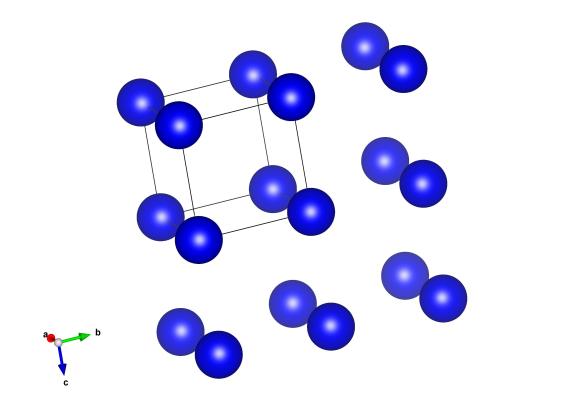An Element of surprise – The crystal structure of Polonium
What does it look like?

Image generated by the VESTA (Visualisation for Electronic and STructual analysis) software http://jp-minerals.org/vesta/en/
What is it?
Though it looks very simple, this crystal structure of polonium is a bit of a strange one. First discovered by Marie and Pierre Curie in 1898, It is the only element to form into a simple cubic structure, a cube with an atom sitting at each corner. How this stacks up is that each of the Polonium atoms sit on top of each other. Don’t think this is that odd? Try taking some ping pong balls – and then construct the next layer so that each ball in this new layer sits directly on top of the one below. It’s not very stable is it? All other elements form 'close packed' structures, like Gold (cubic close packing) and Krypton (hexagonal close packing). In these structures the next layer sits in the dimple left between atoms in the layer below. Polonium, it would seem, is very different.
Where did the structure come from?
This very simple structure was first described in 1966, along with how the structure can change when you heat it up. More recently a group of theorist have investigated why Polonium takes up such a simple structure.






